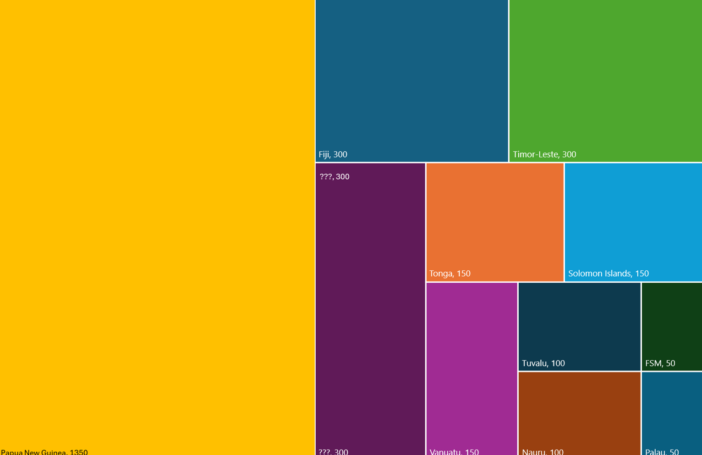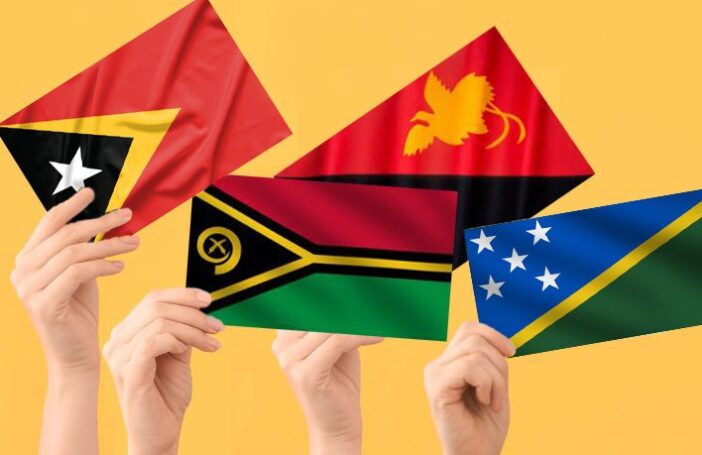The Kiribati government’s decision not to join the inaugural ballot for Australia’s permanent migration pathway, the Pacific Engagement Visa (PEV), came as a surprise to many.
As an I-Kiribati mobility and climate change scholar who has had the privilege of working under two Kiribati government administrations with divergent views on migration, I am writing this article to show why rejecting the PEV is a missed opportunity.
Three out of the 12 Pacific island countries eligible for the PEV opted out of the visa. Samoa, it appears, declined due to concerns over the high level of outmigration of its people. The Republic of Marshall Islands has an existing pathway to the United States under its Compact of Free Association, and likely did not see the need for another scheme. Then there is Kiribati, a country with a fast-growing young population, high unemployment, limited economic opportunities, and few migration opportunities. No reason has been put forward by the Kiribati government for opting out. Was it an inclusive decision? Was it fair for the government to decide on behalf of everyone?
Kiribati sits at the centre of the world, at the intersection of the international dateline and the equator. It straddles all four hemispheres, making it a location of strategic importance in geopolitics today. Halfway between Australia and Hawaii, the country’s total land area is 811 square kilometres, about the size of Canberra. Kiribati’s 33 islands are dispersed over 3.5 million square kilometres of ocean territory, roughly the size of the states of Western Australia and South Australia combined. Labelled a small island state, Kiribati is essentially a big ocean state. It stands not more than three metres above sea level and its fragile geography is an impediment to its development and efforts to mitigate threats of climate change.
The economy of Kiribati is small, and its prospects for growth are limited due to its remoteness and internal dispersion. Its GDP per capita is below US$2,000 and its population of nearly 120,000 people is growing rapidly. This explains why access to international labour markets has remained a priority for every government that comes to office.
Labour migration is not new to I-Kiribati. The country prides itself on nearly 60 years of seafaring and associated work in the maritime and fisheries sector. More recently, New Zealand’s Recognised Seasonal Employer (RSE) scheme and the Pacific Australia Labour Mobility (PALM) scheme employ more than 3,000 I-Kiribati workers every year. Remittances have already become a key source of income for households and accounted for 8.4% of GDP in 2020.
While PALM and RSE participation is a good start, there are plenty of reasons why Kiribati should be seeking more migration opportunities and embracing the PEV.
First, Kiribati suffers from the tyranny of distance, resulting in high living costs and low living standards. For many economically vulnerable communities, migration to a first-world country like Australia, whether short-term or permanent, provides an escape from economic hardship. My own PhD fieldwork in Kiribati found remarkable growth in the popularity of labour migration schemes. In particular, I-Kiribati workers in Australia spoke highly of the PALM scheme and compared it favorably to the situation of being unemployed in Kiribati.
Second, Kiribati is one of the most densely populated places on earth. More than half its population is concentrated on the small strip of land that serves as the capital – South Tarawa. Attempts to control rural-urban migration have been trialled and failed to stem the flow. Migration under the PEV would be one practical way to reduce population pressures.
Third, Kiribati is highly vulnerable to climate change. Migration is not the solution to climate change, but having migration options is one effective adaption response in a global system that lacks governance mechanisms to protect climate-threatened communities. While rejecting apocalyptic climate vulnerability narratives is crucial to maintaining agency, the reality is that certain aspects of Kiribati’s geography render the country susceptible to climate change impacts.
Fourth, while PALM and RSE have been popular in Kiribati, the country is still a minor player in these schemes — for example, providing only an average of 5% of all PALM workers entering Australia in recent years. Indeed, the country’s isolation and other factors make it difficult for Kiribati to compete against other countries for temporary migration places (high transport costs being one factor), so it might be better suited to permanent migration schemes such as the PEV. The PEV will also be valuable in growing the Kiribati diaspora in Australia, which is tiny (just 1,263 in 2021). And the PEV is better than PALM in that it allows family accompaniment, does not tie the worker to a single employer, and allows access to many government benefits. These measures promote migrant safety and wellbeing and reduce the risk of exploitation.
A fifth point is that rejecting the PEV risks increasing the dependency of the I-Kiribati population on government handouts such as the social protection program – te mwane n aki mwakuri or unemployment allowance – and the copra subsidy. The former pays A$50 monthly to all I-Kiribati aged 18-59 years, while the cost of the latter increased dramatically from A$1 to A$4 per kilogram in the last four years, despite challenges for coconut producers with irregular shipments and competition in the international market. Both schemes, while designed to alleviate poverty, defeat the government’s purpose of building social resilience, and are fiscally unsustainable. By building sustainable economic opportunities for growth, including through migration, the government could treat the country’s dependency syndrome.
Finally, there is no doubt that the PEV would be very popular. The government needs to explain why it has rejected the PEV in 2024 given that Kiribati participates in New Zealand’s PEV-equivalent, the Pacific Access Category (PAC) visa scheme. In 2019, the most recent year for which we have data, 58 I-Kiribati applied for each one of the 75 PAC visas available. A fair process would be a nation-wide consultation before the next PEV ballot in 2025.
Kiribati is at a fundamental point in its history where it strives to challenge colonial constructs, exercise sovereignty amid geopolitical tensions, reinforce national and cultural identity, and chart its own future. However, as vital as this is, the government must not throw the baby out with the bathwater. Transforming Kiribati into the Dubai and Singapore of the Pacific is not impossible but it will not happen overnight, unless the government capitalises on the PEV to achieve its goal of increasing overseas employment by 100% by 2036. Until then, the rights of I-Kiribati to employment, migration, and culture, regardless of where they are in the world, must be fully recognised and not compromised in the name of decolonisation, nationalism or geopolitics.






Mauri Nei Rosa, ko rabwa for your comments. As the PEV is an annual ballot, I am hoping the government considers joining the 2025 round. Thank you for the marvellous work you do for our fellow I-Kiribati here in Australia. Tekeraoi te beku.
This is very interesting, ko rabwa Akka n am insights. Now I know why Kiribati is not included in the pilot PEV scheme. We could never get a straight answer, not even from our own Ministry of Labour. This is a shame as we all know there is over population and under employment and this is another pathway for our people to improve their lives.